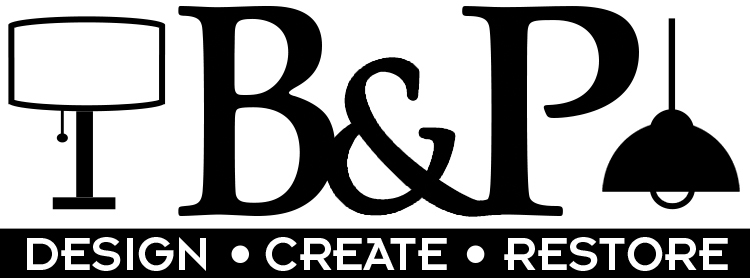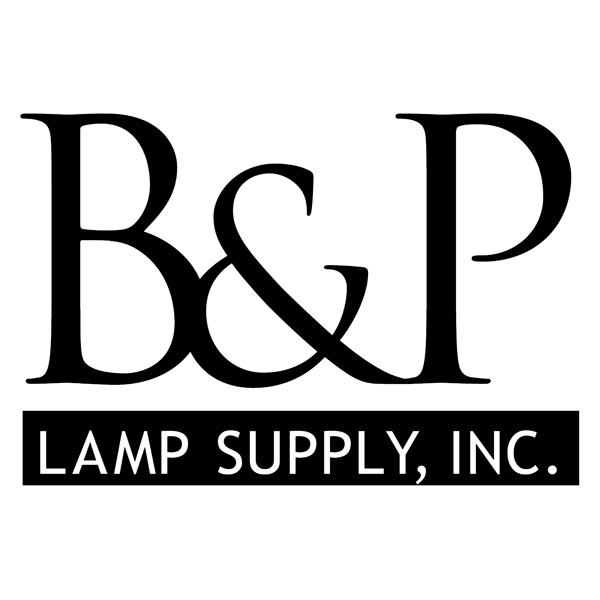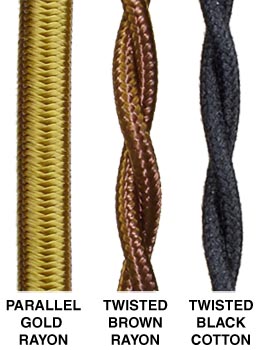|
Lamp Cords Size, Description, and ApplicationThe following information on lamp cords and lamp wire is intended as a guide for those with a basic understanding of wiring household appliances. Do not attempt do-it-yourself home wiring or repair without professional advice and/or guidance. Underwriters Laboratories (U.L.) issues standards for lamp cord manufacturers that specify wire gauge (size) and insulation thickness/durability. These specifications translate into the numbers that you see in our product descriptions for lamp cord and appear in very small lettering on the lamp cord itself. The majority of the lamp cord that we sell is strictly intended for use in portable and residential lighting and the specification numbers bear this out. For example, a lamp cord described as 18/2, SPT-1, 105° is of the following specification: “18/2” specifies that the copper wires inside the insulated cord are of 18 gauge and that there are actually 2 wires parallel (one positive, one negative), therefore 18/2. “SPT-1” basically, is a standard to specify insulation thickness of the cord. The insulation, of course, protects us from being “shocked” by the electrically charged wires inside the lamp cord. Insulation thickness provides varying degrees of resistance to heat and abrasion. A rating of SPT-2 on lamp cord means that it is thicker (and in this case somewhat more resistant to abrasion) than a lamp cord rated SPT- 1˝, which in turn, is thicker and more resistant to abrasion than a cord rated SPT-1. Unfortunately, the thicker the lamp cord, the more problems you may encounter when trying to insert, pull, or slip the cord through your lamp or fixture. The need for different levels of thickness (& protection) becomes clear when taking into account the different applications for these lamp cords. As a rule of thumb, we offer the following as a guide to U.L.’s recommendations according to SPT ratings: • SPT-1 This wire is U.L. Listed for use in hanging fixtures & sconces, easily slips 1/8 IP (3/8” dia.) pipe. • SPT-1 1/2 This wire is U.L. Listed for use in fixtures hanging by a chain, easily slips 1/8 IP (3/8” dia.) pipe. •SPT-2 This wire is U.L. Listed for use in portable table and floor lamps, difficult to slip 1/8 IP (3/8” dia.) pipe. “105°” is a reference to a limit of heat resistance of the insulation. In this case, the lamp cord is rated to resist failure from temperatures up to 105° C (221°F). Antique Lamp Supply offers lamp cord with specifications other than those listed above. These cords (e.g. 22/2 (thin gauge) and rayon covered 18/2) are for very special applications, usually involving the restoration or conversion of early electric lighting or original gas fixtures, for use with modern electrical components. Only lighting restoration professionals with knowledge and experience should attempt to use them. The use of these “special application” lamp cords for general lamp wiring or repair is highly discouraged. For more information on recommended wiring components and wiring procedures for lamps & lighting visit Underwriters Laboratories’ website @ http://www.ul.com Also, available reading on do-it-yourself lamp repair: • Ortho's All About Wiring Basics (Ortho's All About Home Improvement) (Paperback) by Larry Erickson • All About Lamps: Construction, Repair and Restoration by Frank W. Coggins (out of print) • The How-To Book of Repairing, Rewiring, and Restoring Lamps and Lighting Fixtures by Rachel Martens (out of print) • Basic Wiring by Sunset Publications |





